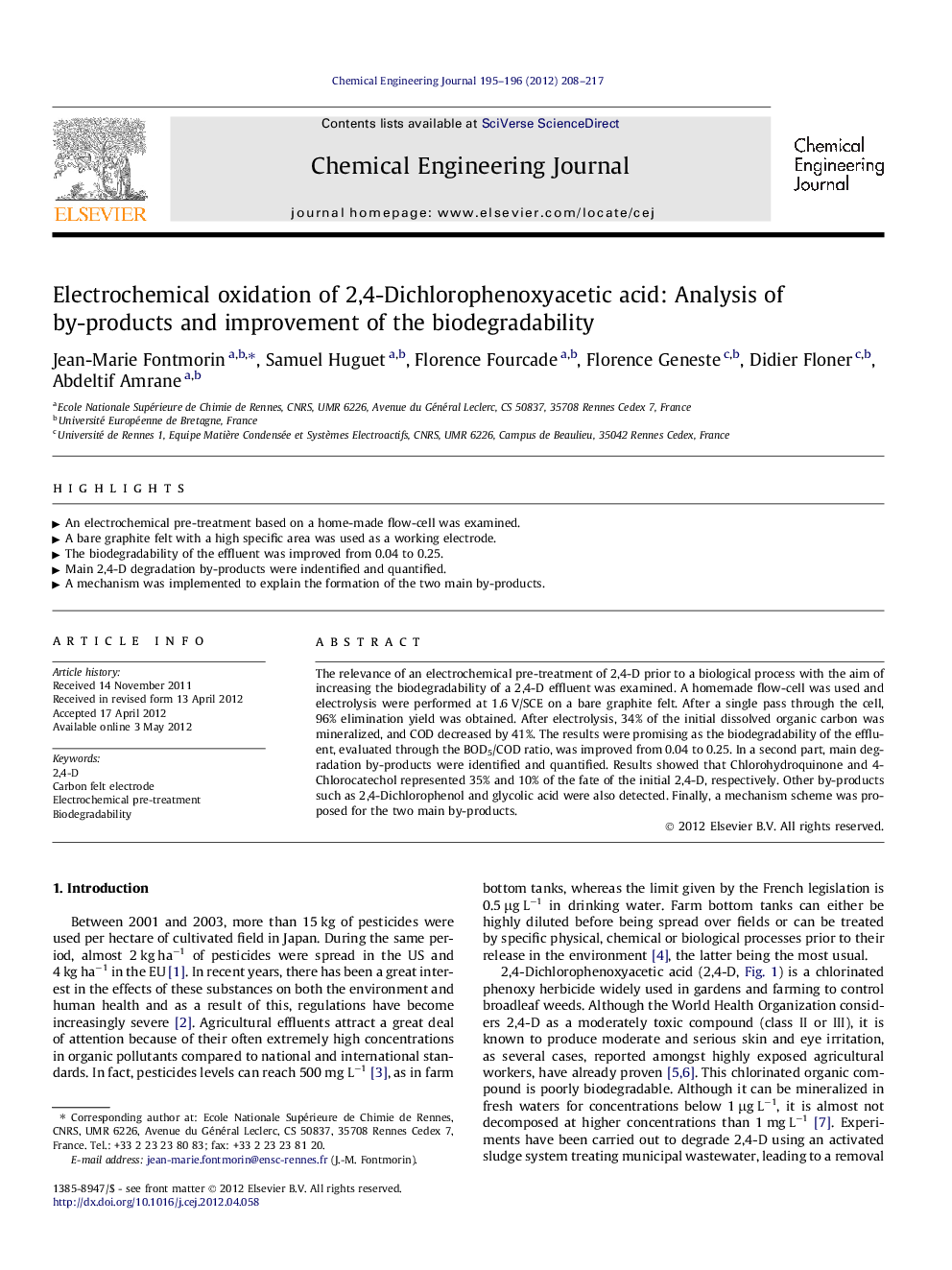| Article ID | Journal | Published Year | Pages | File Type |
|---|---|---|---|---|
| 149749 | Chemical Engineering Journal | 2012 | 10 Pages |
The relevance of an electrochemical pre-treatment of 2,4-D prior to a biological process with the aim of increasing the biodegradability of a 2,4-D effluent was examined. A homemade flow-cell was used and electrolysis were performed at 1.6 V/SCE on a bare graphite felt. After a single pass through the cell, 96% elimination yield was obtained. After electrolysis, 34% of the initial dissolved organic carbon was mineralized, and COD decreased by 41%. The results were promising as the biodegradability of the effluent, evaluated through the BOD5/COD ratio, was improved from 0.04 to 0.25. In a second part, main degradation by-products were identified and quantified. Results showed that Chlorohydroquinone and 4-Chlorocatechol represented 35% and 10% of the fate of the initial 2,4-D, respectively. Other by-products such as 2,4-Dichlorophenol and glycolic acid were also detected. Finally, a mechanism scheme was proposed for the two main by-products.
► An electrochemical pre-treatment based on a home-made flow-cell was examined. ► A bare graphite felt with a high specific area was used as a working electrode. ► The biodegradability of the effluent was improved from 0.04 to 0.25. ► Main 2,4-D degradation by-products were indentified and quantified. ► A mechanism was implemented to explain the formation of the two main by-products.
